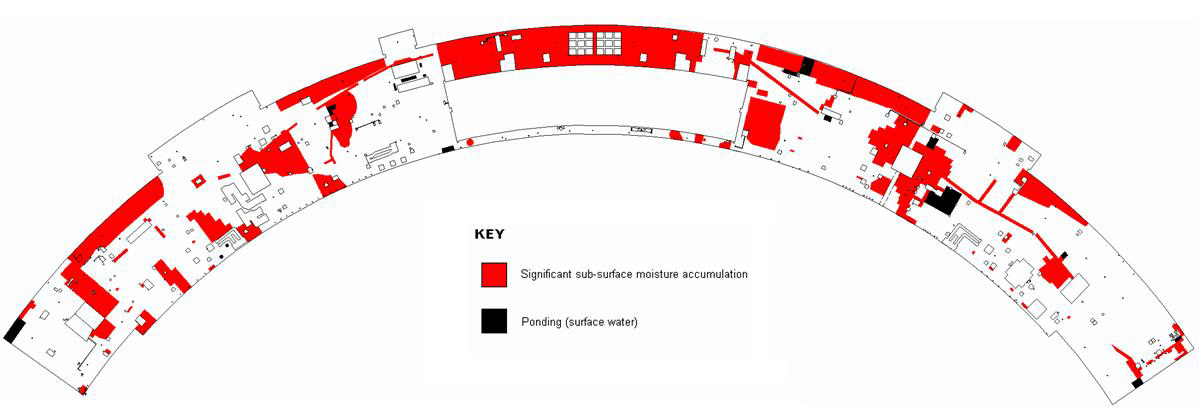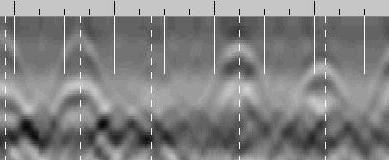NDT&E Data Examples
Work performed for SUPERSTRUCTURES
Work performed for SUPERSTRUCTURES
What follows are real examples of data collected using non-destructive testing techniques. As opposed to probes and sampling, NDT provides actual data about entire areas surveyed - with absolutely no disturbance to the building fabric.

120,000 square feet of roof surface surveyed for sub-surface moisture accumulation using an electrical capacitance meter. The only surface that could not be surveyed was covered with ponding water.
The PVC membrane was highly reflective of infrared, so the use of thermography was not possible. Nevertheless, the entire surface was surveyed and mapped in only two days.

This was one of several walls surveyed for the presence (and absence) of wall ties. By using a covermeter instead of a conventional pachometer, additional information could be obtained about the quality of the installation. From prior probes, it was known that wall ties were missing or installed too far back from the surface of the brick to be effective. Quality ratings of "A", "B"", and "C" were assigned based upon the strength of the metal signal detected at the surface.
The survey showed that there were large areas with no wall ties installed at all, and directed where additional probes could be performed.

The thin (3/8") tile on this bulkhead wall was surveyed using a handheld electrical capacitance meter. Often mislabeled a "moisture meter," this data shows that EC can be used to locate trapped water (red) and voids (pink).

This high parapet CMU wall was surveyed using both ground penetrating radar and a covermeter. Some CMU cells were grouted without reinforcement bar (rebar), some rebar was placed in ungrouted cells, and some rebar was properly installed in grouted cells. The horizontal truss mesh was also mapped.

This high-ceilinged turret was surveyed using infrared thermography. The cold exterior temperatures pass through the studs (blue) but are blocked by the insulation (yellow). The survey proved that the insulation was properly installed and there were no gaps.

This is a typical application of infrared thermography - the detection of sub-surface moisture accumulation under a built-up roof with no ballast. Water has soaked (but not necessarily saturated) a rectangular piece of coverboard or insulation. Penetration is probably through the seam, although IR cannot prove that; another NDT technology, such as DC pinhole detection, could be used if only patching is desired.

This ground penetrating radar (GPR) profile of a high brick parapet wall shows that a course of truss mesh is missing. The survey was performed during the construction phase at the request of a construction inspector after a contractor proceeded with unsupervised work.
